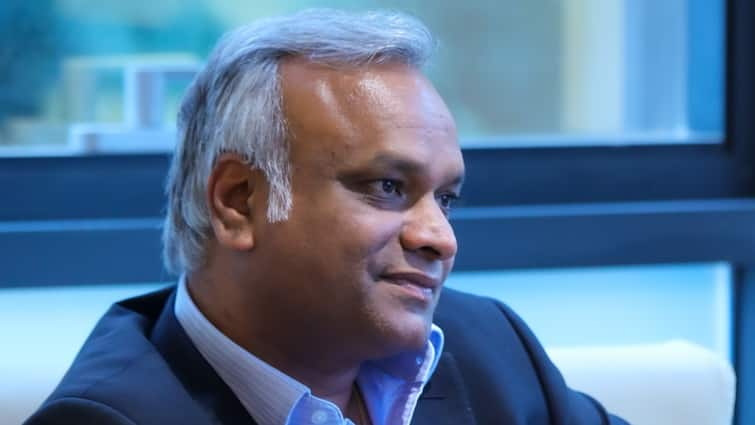The scene is a jarring one. A judge, dressed in a long English legal wig and dark robes, is captured mid-swing, about to slam his gavel down on a man lying helplessly on the ground.
The man clutches a placard: empty, except for splatters of red paint that look like blood. Against the otherwise stark black-and-white tones of the mural, that small splash of colour becomes impossible to ignore.
This is the latest work by Banksy, the world-famous yet elusive British street artist. He unveiled it on Instagram on Monday morning, captioning the post simply: “Royal Courts of Justice London.”
The mural doesn’t spell out its meaning. But many have linked it to the recent crackdown on pro-Palestinian demonstrations in the UK, where, according to reports, almost 900 people were arrested.
The artwork had instantly attracted crowds who stopped to take photos. But it didn’t stay visible for long. As BBC noted, the piece was quickly covered up with large sheets of black plastic and cordoned off with metal barriers. Shortly after, authorities said it would be removed.
The concealment has since only added to the intrigue, leaving many wondering the message behind Banksy’s latest statement. Here’s what we know about it
The pro-Palestine protest connection
Banksy’s mural is being widely read as a response to the recent crackdown on pro-Palestinian activism in the UK.
Over the weekend, hundreds of demonstrators were arrested while supporting Palestine Action, an activist group that the British government officially banned in July, labelling it a terrorist organisation.
Editor’s Picks
The ban came after the group carried out a series of direct actions, including breaking into a Royal Air Force base and damaging military aircraft. Under the new rules, even wearing or displaying material that could be seen as showing support for the group is a criminal offence.
Defending the government’s move, Security Minister Dan Jarvis told Parliament that the group had crossed the threshold for terrorism. He said its actions had “increased in frequency and severity,” with some members “demonstrating a willingness to use violence.”
But the decision sparked fierce debate over civil liberties and the right to protest. Just days ago, hundreds of demonstrators sat silently outside Parliament, holding placards that read, “I oppose genocide. I support Palestine Action.”
Following the unveiling of Banksy’s mural, Defend Our Juries, another activist group that has been campaigning against the ban, released a statement praising the work.
They said the piece “powerfully depicts the brutality unleashed by Yvette Cooper on protesters by proscribing Palestine Action,” referring to the former home secretary who introduced the ban.
The group added, “Categorising these acts of conscience as well as direct action targeting weapons’ companies property as terrorism, is objectively preposterous and profoundly corrosive to the principles of free expression and assembly that underpin a democratic society.”
By Monday afternoon, the mural had already been hidden away, covered with black plastic sheets and metal barriers. Its location, directly beneath a CCTV camera on the Royal Courts of Justice, only added to the drama.
Not guts enough to actually clean off a piece of Banksy artwork so they’ve built a structure to cover it up. So pathetic. pic.twitter.com/4M683TsElK
— MKathrynH (@candorplus) September 8, 2025
When asked about the sudden guard duty, one of the two security officers stationed outside told BBC, “At least it’s not raining.”
Banksy’s previous work
Banksy, the elusive street artist from Bristol whose identity is still a mystery, has built his reputation on thought-provoking and satirical stencilled art. His work often takes aim at cultural, social, and political issues, sparking debate wherever it appears.
Just last summer, he launched an animal-themed series across London, creating nine different works in the city. The campaign ended with the image of a gorilla seemingly lifting a shutter at the entrance of London Zoo.
Other memorable pieces from that series included piranhas swimming inside a police sentry box in the City of London and a wolf howling on a satellite dish in Peckham. That latter artwork didn’t last long, it was removed from the roof of a shop less than an hour after it appeared.
Beyond London, Banksy has often turned his attention to global conflicts. In the West Bank, he has created some of his most politically charged works.
In December 2019, he unveiled a “modified Nativity” scene at a Bethlehem hotel, showing Jesus’ manger placed against Israel’s separation barrier. A blast hole in the wall formed the shape of a star, making the piece instantly recognisable and widely discussed.
Other works from the region include a dove wearing a flak jacket and a masked protester captured mid-throw, but instead of a weapon, he hurls a bouquet of flowers.
Another showed the “Walled Off Hotel” in Bethlehem, designed as both an art installation and a guesthouse. Famous for its views of the separation wall, the hotel became a symbol of resistance and artistic protest before finally closing its doors in October 2023.
with input from agencies
End of Article

)

